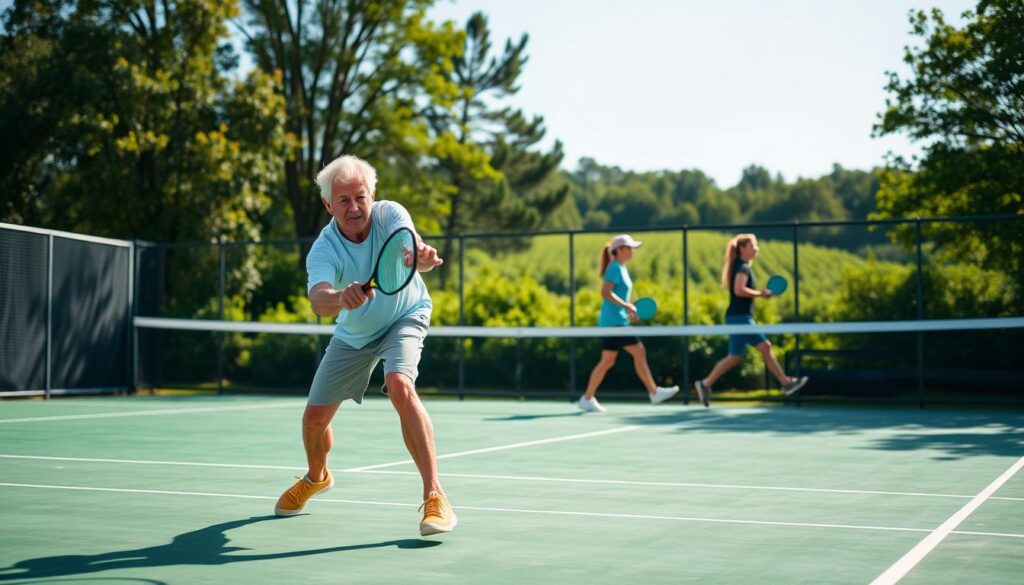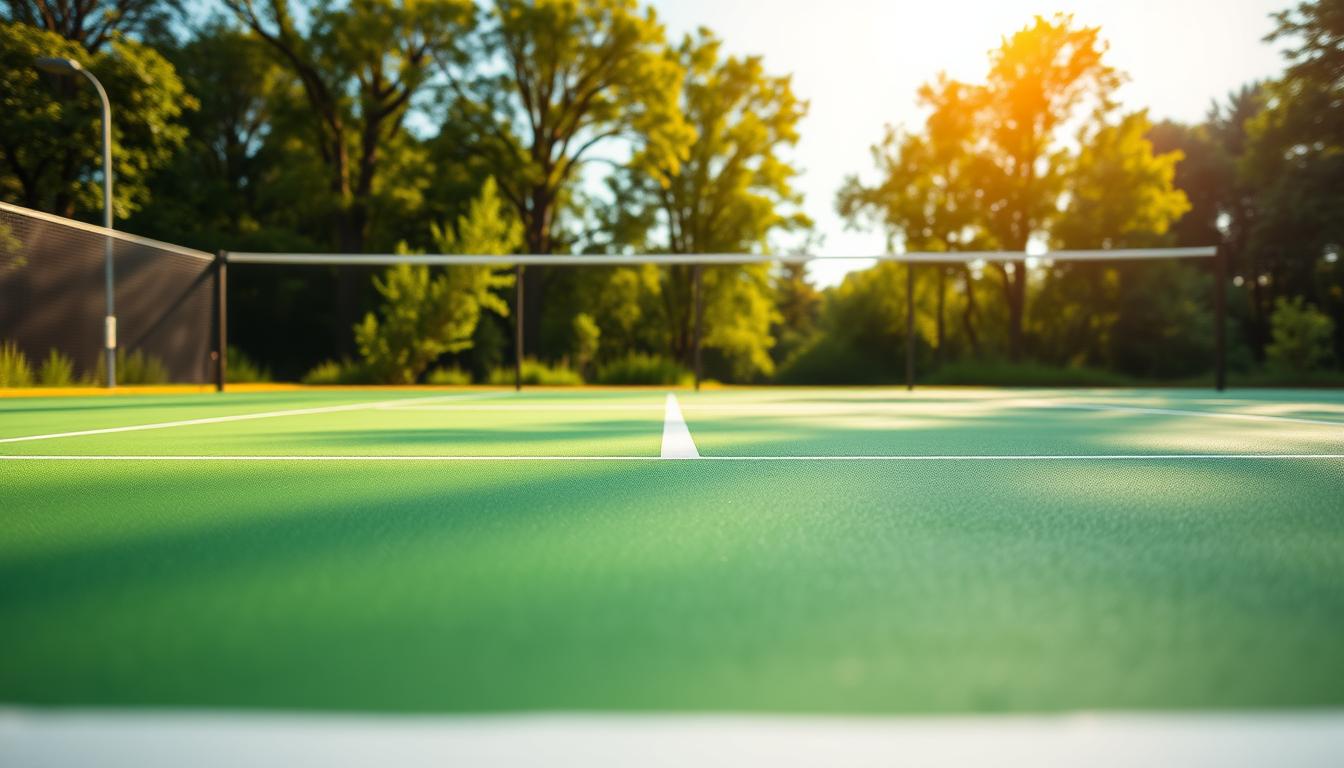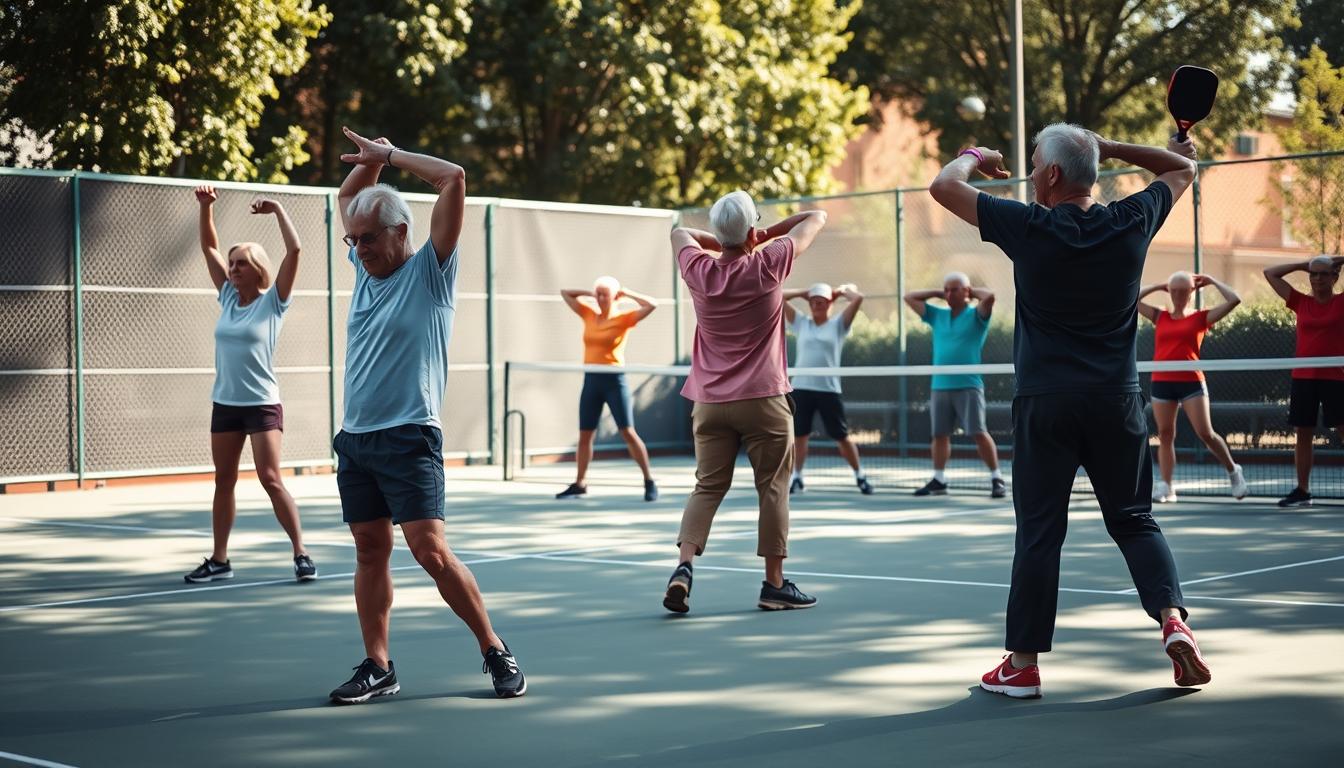Could short, smart intervals be the secret to playing longer and feeling better on the court?
This how-to guide shows active adults a clear way to blend plant-forward habits with low-impact training that protects joints and boosts on-court performance.
You’ll learn interval-style conditioning that mirrors real points on a small court, using simple tools like a paddle and ball plus a few off-court aids.
Expect step-by-step sequences that respect recovery, emphasize safety, and fit busy schedules so you get more time playing and less time guessing what to do.
Small adjustments to grip, footwork spacing, and court positioning reduce wear-and-tear while keeping competitive intent intact.
We also highlight community-driven drills to make sessions social and consistent, with clear cues to track progress and keep your body resilient for the long haul.
– Practical interval training that matches game play.
– Joint-friendly moves to protect the body.
– Short, efficient sessions for busy schedules.
– Community and simple tools to stay consistent.
Why Low-Impact Intervals Elevate Pickleball Performance After 50
Short, structured bursts of effort can lift court fitness without hours on a treadmill. They match how points play out and save time while targeting several systems at once.
HIIT advantages for older adults: heart, stamina, and brain benefits
High-intensity bouts improve heart function and VO2 max faster than steady work. Studies show gains in muscle strength, insulin sensitivity, and cognitive sharpness, which help decision-making during fast rallies.
Pickleball as natural intervals: explosive rallies and social motivation
The sport already alternates short bursts with rests between serves and points. That rhythm makes interval training easy to practice with a partner and keeps motivation high through community play.
Low-impact by design and safety first
A smaller court, a lighter paddle and a softer ball lower joint stress while still building speed and control. Start with a proper warm-up, use stable footwear, and raise intensity gradually to protect the body and aid recovery.

| Benefit | Evidence | On-court effect |
|---|---|---|
| Heart health | VO2 up 15–20% | Better stamina late in matches |
| Strength & metabolism | Muscle gains ~12% | Stronger finishes and shots |
| Cognition | Reaction +10–15% | Faster reads during rallies |
How to Build Court-Ready Cardio with Low-Impact Intervals
Train like a match: short, directed bursts on the court build the speed and stamina you need for tight rallies. Start with a brief primer on movement quality, then layer focused intervals that copy the sport’s stop-and-go rhythm.

Starter warm-up
Begin with 5–8 minutes of dynamic mobility: ankle circles, hip openers, knee drives, and shoulder CARs. Finish with light shuffles to the kitchen line to groove posture and balance.
Interval blueprint
Use a 20 seconds work / 20 seconds rest structure for 5–8 rounds. That tight rhythm mirrors real points and trains breathing between rallies.
Key exercises
- Medicine ball slams: Raise a medium ball overhead, hinge at the hips, and slam. Keep ribs down and drive through the legs so the whole body works without pounding joints.
- Lateral shuffles: Shuffle from kitchen sideline to center line and back. Stay low, chest up, and land softly to protect knees while sharpening reactive footwork.
- Kettlebell swings: Hip hinge, let the bell float to chest height, and use the hips to power the motion; this strengthens glutes and hamstrings for longer rallies.
Off-court options & progressions
Rotate walking inclines, cycling, swimming, or rowing using the same 20/20 format to expand capacity without extra impact. Start at doubles pace on the court, increase speed for singles, and string circuits together to prep for multiple matches.
Recovery between sets
After each mini-block, practice nasal breathing and slow exhales to downshift heart rate. Use timed rests and track rounds and perceived effort to progress safely.
vegan pickleball 50+ cardio: fueling, recovery, and community habits
Smart fueling and simple recovery habits let you train more often and feel fresher between matches. Small choices before and after a session protect the heart, support muscles, and sharpen on-court performance.
Plant-forward fueling for intervals: carbs for court time, protein for muscles, hydration for heart
Eat carbs 60–90 minutes before a session to sustain energy for interval work. Pair that snack with a modest protein source afterward to help muscles recover and adapt to training.
Bring water and sip during every exercise block. Consistent hydration aids thermoregulation and keeps the heart working efficiently when play heats up.
Recovery the vegan way: anti-inflammatory foods, sleep routines, and light mobility
Favor leafy greens, berries, nuts, seeds, legumes, and extra-virgin olive oil to reduce soreness and support recovery. Add 5–10 minutes of evening mobility and an unhurried wind-down to protect sleep quality.
Keep gear packed the night before and schedule court time with partners or local groups to make practice regular. A short journal entry after play is a pro tip that helps you track what fuels your best performance—bonus: batch meals on weekends cut prep friction and keep momentum steady.
Conclusion
Finish strong: a focused, low-impact plan helps you sharpen game skills and sustain fitness without extra wear on the body.
Low-impact intervals and brief interval training sessions make each workout feel directly useful to match play. They mirror short rallies and cut recovery time while building endurance.
Progress by level—start at doubles pace and add speed and volume as you feel ready. Pro tip: schedule sessions, log RPE, and rotate off-court work to stay fresh.
Bonus moves: pack gear the night before, train with a partner, and close each block with breath-led downshifts. These small steps compound into steadier energy, better control along the line, and more confident play in back-to-back matches.




